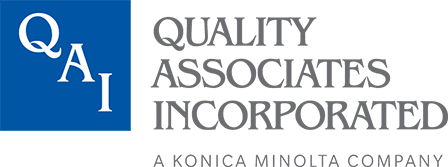Efficient document management is not just a luxury—it’s a necessity. Organizations deal with an ever-increasing volume of digital documents, from contracts and invoices to employee records and project files. Ensuring document security and streamlined handling is critical for productivity, compliance, and data protection.
Why Document Management Security Matters
Before we delve into best practices, let’s understand why document management security is paramount:
- Records Management: Unauthorized access to sensitive information can lead to data breaches, financial losses, and reputational damage.
- Compliance Requirements: Many industries have strict regulations regarding data privacy and document handling. Non-compliance can result in hefty fines.
- Workflow Optimization: Efficient document management streamlines workflows, reduces manual tasks, and enhances collaboration.
11 Best Practices for Document Management Security
1. Implement a Document Management Solution (DMS)
A robust DMS provides a centralized repository for all your digital documents. It offers features like version control, access permissions, and audit trails. Consider solutions like Adobe Acrobat, Folderit, or cloud-based DMS platforms.
2. Categorize and Classify Documents
Organizations must base their indexing and classification decisions on the sensitivity of the documents being managed (e.g., confidential, public, internal). Clear and consistent categorization ensures proper access controls and helps users find what they need efficiently.
3. Access Control and User Permissions
Define who can access, edit, or delete specific documents. Role-based permissions limit exposure to sensitive data. Regularly review and update access rights as roles change within the organization.
4. Encryption and Secure Storage
Encrypt stored documents and data in transit. Use robust encryption algorithms to protect against unauthorized access. Choose secure cloud storage solutions with robust encryption protocols.
5. Automate Document Management Processes
Manual processes are time-consuming and error-prone. Automate repetitive tasks like document routing, approvals, and notifications. Workflow automation ensures consistency and reduces human error.
6. Version Control
Maintain a clear version history for documents. Avoid confusion by tracking changes, revisions, and updates. Ensure that users always work with the latest version.
7. Document Retention Policies
Before any automation occurs, organizations must understand how legal requirements and industry standards for different types of documents vary. Some documents require permanent storage, while organizations can delete others after a specific period. Automated disposition is critical to reduce litigation risk.
8. Secure File Sharing Practices
When sharing documents externally, use secure channels. Implement password protection, expiration dates, and download restrictions. Avoid sending sensitive information via unencrypted email attachments.
9. Redaction of Sensitive Information
Before sharing documents, redact sensitive data (e.g., Social Security numbers, financial details). Redaction tools ensure that confidential information remains hidden.
10. Multi-Factor Authentication (MFA)
Require MFA for accessing critical documents. Even if someone gains access to login credentials, MFA adds an extra layer of security.
11. Employee Training and Awareness
Educate employees about document security best practices. Regular training sessions raise awareness about risks, phishing attacks, and safe document handling.
LET QAI ASSIST YOU WITH DOCUMENT MANAGEMENT
We live in a world of information: Paper documents, printed files, electronic forms, computer documents, emails, and even legacy microfilm often contain records that must be actively accessed or preserved for future reference.
Whether you need to convert printed documents into a digital format, save documents for historical or regulatory purposes, or enable records to be searched and easily accessed by authorized personnel, QAI can help.
QAI makes information available at your fingertips – it’s not taking up space in a warehouse or file cabinet. QAI provides the tools, technology, and services to help your organization accurately and effectively capture, manage, store, preserve, and deliver content across the enterprise. Whether your group includes five people or 5,000, QAI will help your team work more efficiently and with greater accuracy.
Reach out today to see how we can help: 410-884-9100 or email us at info@qualityassociatesinc.com.
[Created by a human with the assistance of Microsoft CoPilot and Google Bard.]


